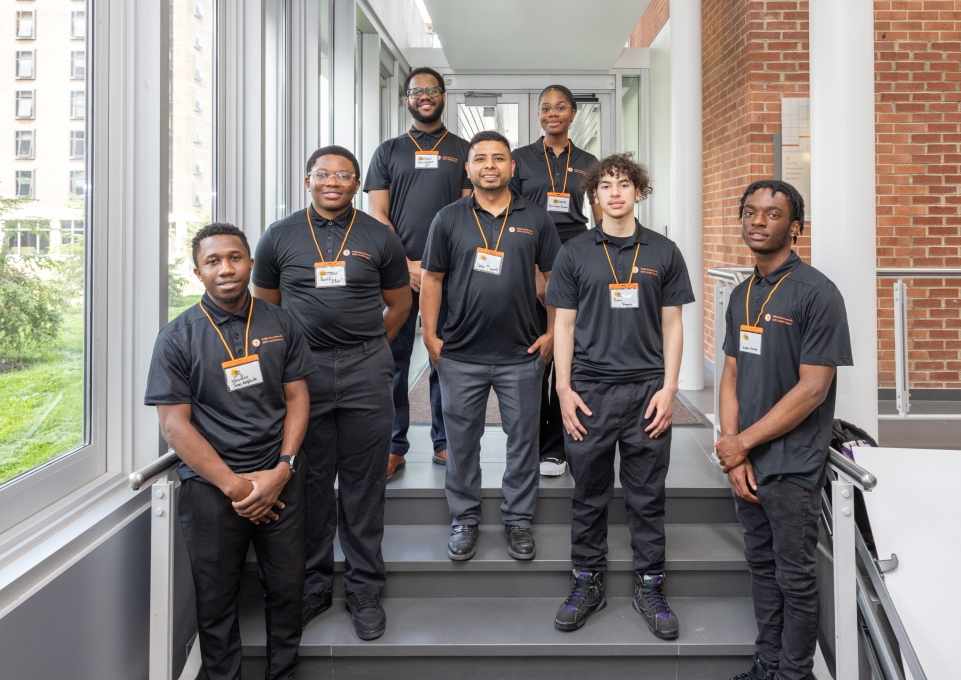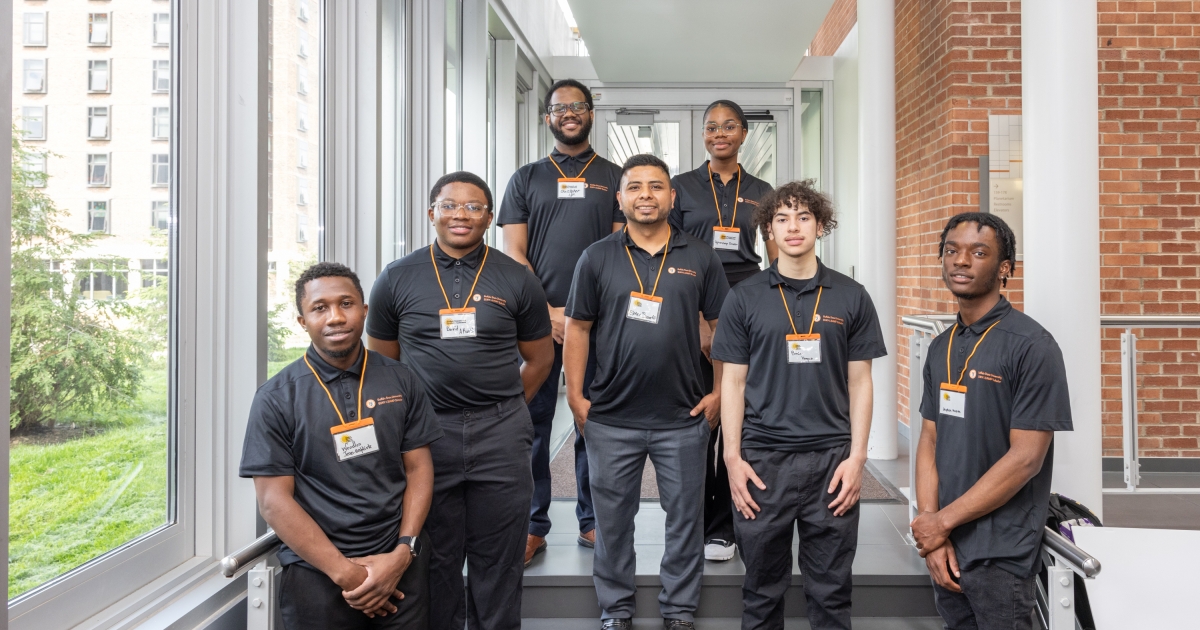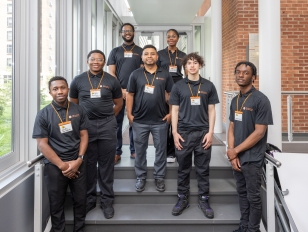
According to the National Science Foundation, the science, technology, engineering, and mathematics (STEM) workforce has been gradually diversifying over the past decade, with increased representation of women and underrepresented groups like African Americans, Hispanic Americans, American Indians, Alaska Natives, Native Hawaiians, and Native Pacific Islanders. Even so, most of the STEM workforce remains White and male.
Diversification often begins with education, which is why NSF funds the SUNY Buffalo State Louis Stokes Alliance for Minority Participation (LSAMP), a program that provides student enrichment through undergraduate research and support services. SUNY LSAMP consists of 14 campuses across New York State and strives to increase the number of students matriculating into and successfully completing high-quality STEM degree programs, such as those offered by Buffalo State University.
All of Buffalo State’s STEM departments—Biology, Chemistry, Computer Information Systems, Geosciences, Engineering Technology, Mathematics, and Physics—actively participate in LSAMP. Faculty members in each department mentor students belonging to underrepresented groups as they conduct and present research at local and national conferences.
Sarbani Banerjee, Buffalo State professor of computer information systems and the university’s LSAMP director and research mentor, said the impetus for LSAMP was the desire to enrich the undergraduate research experience for underrepresented students.
“Diversity is crucial in the STEM fields,” Banerjee said. “The Buffalo State LSAMP program is designed to help underrepresented students become successful researchers and, in turn, contribute to the diversity we need in these disciplines.”
During the fall semester, Banerjee leads an orientation meeting to recruit pre-researchers—students who are underrepresented in STEM and maintain a minimum 3.0 grade point average. The NSF grant that funds the LSAMP program allows funding for 10 research scholars, a number that has been met since the inception of the grant period.
“As a pre-research scholar, a student’s primary task is to select a mentor with whom they will collaborate on their research,” Banerjee explained. “Once a student advances to the role of research scholar, they work closely with their mentor to conduct their research, develop proposals, and present their findings at various conferences.”

David Akanbi presents his research at the 2024 Student Undergraduate Research and Creativity Conference.
David Akanbi, a senior computer information systems major, said that being an LSAMP scholar has helped him narrow his career choices by identifying where his passion lies.
“I always had a general idea of what I liked, but being a scholar further solidified my love for video games and video game development,” he said. “I learned how to properly conduct research and neatly keep track of information and findings while also answering the questions I formed along the way. I learned about the video game industry and what it takes to make a video game in its entirety, while also studying the future of the industry by observing the trends of certain genres, consoles, and games. I wasn’t sure what to do after college, but being a scholar helped me realize I want to go to graduate school.”
LSAMP scholars have regular meetings with their mentors, attend career-planning workshops, and conduct research throughout the spring semester. Scholars are also required to present at Buffalo State’s annual Student Research and Creativity Conference and encouraged to send proposals to national conferences. In July, three LSAMP scholars from Buffalo State presented at the 2024 Diversity in STEM Conference in Baton Rouge, Louisiana.
“My research experience deepened my growth,” said Danaya Oliver-Ragland, a senior biology major. “It taught me that discipline produces results. Showing up every day to collect and interpret data showed me the importance of dependability. These lessons in persistence and commitment have shaped my approach to both research and life.”
The benefits of LSAMP scholarship extend beyond academic achievement. Scholars receive stipends for their work, distributed over both semesters; develop self-discipline and confidence in professional settings; and form powerful relationships.
“Being an LSAMP scholar has given me a remarkable opportunity for professional and personal growth,” said Diamond Hamilton, a junior electrical engineering (smart grid) major. “I have learned the importance of networking, as well as that of having a good mentor. This has changed my trajectory as a student because it has shifted my mindset and perspective toward achieving purposeful goals in all aspects of my life.”
“It has taught me the power of vulnerability,” Oliver-Ragland said. “Through sharing my story, I discovered that many others face similar challenges, and connecting with them brought comfort and a sense of belonging. This journey has greatly influenced my aspirations of becoming a physician’s assistant. I am driven even more to make a meaningful difference in the lives of others, just as the LSAMP program has made a lasting impact on mine.”
Photos by Jesse Steffan-Colucci, Buffalo State photographer.



